If necessity is the mother of invention, then 2020 could prove the most fertile time for technological and operational innovation in decades. The COVID-19 pandemic has upended the world, forcing organizations to rapidly innovate amidst economic uncertainty to ensure safety and continuity of service to their customers.
Technology has been a key enabler of this innovation. While digital transformation is not a new concept, it has taken on new meaning as organizations adapt to the new realities set forth by the pandemic. For example, a survey of 200 retailers administered early in the pandemic found that 25 percent of brick-and-mortar stores launched e-commerce platforms to offset the loss of foot traffic1,and overall e-commerce sales are expected to jump nearly 20 percent for the year2.
Electric utilities reacted similarly, quickly transforming operations to support flexible work arrangements and social distancing. Mindsets shifted from if a utility could operate remotely to how this would happen. Utilities responded heroically. Millions of Americans shifted to remote work seamlessly, never wondering what was happening behind the scenes when they plugged in their laptops.
The shift to remote work came with the amplification of customer, operational and employee expectations around digitization of critical utility infrastructure. Nowhere is this more evident than in the demand for remote management of key functions, such as outage management and response, customer usage monitoring and load management, among others.
The demand for remote management is clear, but the path to get there is not. Financial and operational pressures abound for utilities during this uncertain time, creating increased pressure to ensure investments are sound and that technology upgrades scale to meet evolving needs. Following is a guide to exploring and implementing remote management at your organization.
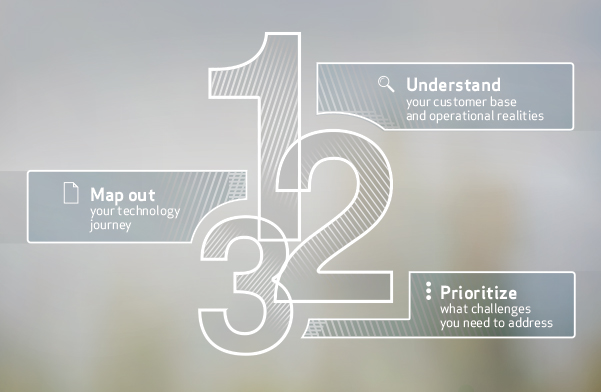
Part 1: Understand your customer base and operational realities
Millennials surpassed baby boomers as the largest living adult generation in the U.S., according to population estimates from the U.S. Census Bureau3. This means an electric utility’s largest customer base is often comprised of individuals who have enjoyed technology from a very young age and their entire working life. Salesforce’s State of the Connected Customer 2019 report found that 75 percent of customers expect companies to use new technologies to create better experiences, while nearly as many (73 percent) said that one extraordinary experience raises their expectations of other companies4. Considering all the ways customers have become accustomed to using digital tools in their personal lives, this also drives expectations around how these customers receive service and information from their utility.
Think about it this way. If these customers want to get healthier, they monitor data from fitness trackers that can tell them how they slept, their heart rate and much more. It is with this same hunger for information that these customers view their electricity usage. They want the ability to peer into their usage and analyze it over time. They want to compare usage data when they switch to more sustainable appliances and light fixtures. Of equal importance, they want to predict and understand their monthly bill. This expectation has been exacerbated by the pandemic as some customers face job loss and unpredictable income.
Running parallel to these evolving customer expectations is changing operational demands. Utilities seeking to better forecast demand have deployed digital solutions to glean more insight into customer usage patterns. Some have transitioned from power-line communication systems and automated meter reading (AMR) to advanced metering infrastructure (AMI) to streamline the data collection process and allow for more accurate meter readings delivered with greater frequency.
The pandemic has made these solutions essential due to increasing revenue uncertainty. A recent industry survey conducted of 51 utilities across the electric, gas and water sectors, found that 78 percent of respondents highlighted revenue collection as one of the top challenges they expect to see due to the crisis.
The global shift to remote work has also placed new demands on the grid and disrupted utilities’ demand forecasts. More people working at home means more consistent residential energy usage, making accurate peak usage more difficult to predict and load management imperative. Residential outage and restoration management also takes on new meaning when customers are working at home, especially given this year’s active hurricane season and the winter months ahead.
Utilities can look at these demands as challenges, but the other side of this coin is the opportunity to deliver value to both customers and employees while improving asset utilization, operational efficiency and costs. So, how can a utility translate these needs into smart investments in remote management?
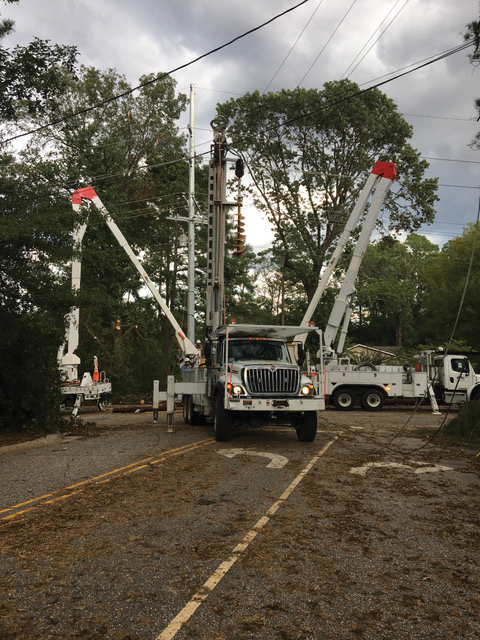
Mutual aid workers move quickly to restore power following Hurricane Florence in 2018.
Part 2: Prioritize what challenges you need to address
In an uncertain economic environment, utilities should take every opportunity to shore up revenue while investing in services that create meaningful customer connections. There are many ways to do this, and any savvy utility manager knows that there is a wide spectrum and no perfect solution when it comes to remote management. To find the right solution, at the right time, start by identifying what key problems your organization needs to solve. While it can be tempting to implement a solution that addresses one particular pain point, don’t overlook the challenges you may face over the next several years and even decades.
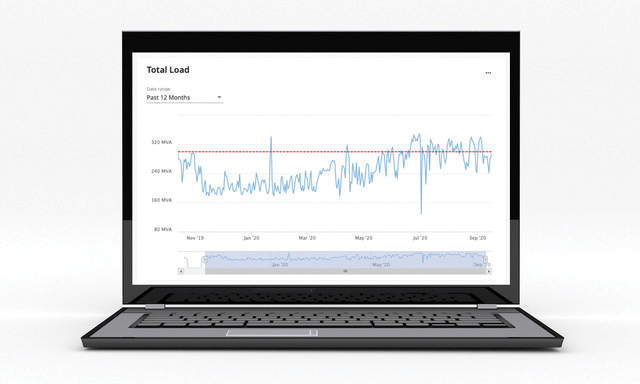
Remote management provides the foundation for demand response capabilities,
enabling analysis of data collected over time to accurately forecast demand.
Think of it like this. You visit the grocery store when you’re hungry for lunch. Does that mean you only buy your lunch and leave? Usually not. You think ahead to dinner that night, even breakfast for the week. You’re thoughtful about what needs you will have in the future, and you stock your cart accordingly. Using this analogy, there are several key elements of remote management that utilities may consider adding to their shopping list as they consider the right solution.
- Outage and restoration management: Remote monitoring capabilities automate the outage notification process so crews can be dispatched even before the customer calls. This helps save time and costs associated with the process of identifying outages and decreases the length of disruption to the customer. It also minimizes safety risks to employees investigating the extent of the outage.
- Remote connect/disconnect: Utilities once viewed remote disconnect as a nice-to-have ability in certain service territories. This mindset is shifting rapidly as access to customer homes is either completely impossible or significantly more challenging. In parallel, some utilities faced smaller work crews because of sickness or family issues caused by the pandemic. Both realities heightened the need for meters that can be connected or disconnected remotely.
- Customer portals: Customer expectations to check usage and conserve energy can be accomplished with a customer portal. In many cases, it empowers the customer to become their own billing specialist and review their usage and subsequent costs. Many utilities also use portals to educate customers on energy conservation and usage.
- Control over grid assets: As residential usage patterns have changed peak usage becomes more difficult to forecast. Remote management serves as the foundation of demand response programs, conservation voltage reduction (CVR) and other capabilities that can help utilities lower their overall costs while maintaining better control over their assets.
Most forms of remote management will help solve workforce utilization and operations throughout the pandemic and beyond. By remotely managing key functions, utilities can enable more remote work, prioritize worker safety and, in some cases, reprioritize workers to more strategic initiatives.
For utilities that have not yet invested or are driven by market conditions to explore options, you may be wondering where to start.
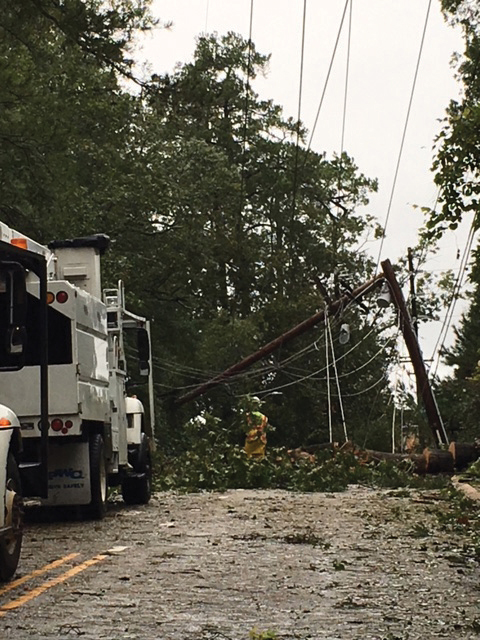
Crews use remote management capabilities to pinpoint exact outage locations, saving time and costs while minimizing safety risks.
Part 3: Map out your technology journey
A utility’s technology implementation starts with identifying the key challenge or a set of issues you want to tackle. This is the first step on a technology journey that has no true endpoint. Rather, the best technology solutions will grow and evolve along with the organization. If the prospect of an endless technology journey sounds more intimidating than exciting, you’re not alone. Following are some considerations to make it more manageable.
- Prioritize investments: Start with the key issues – a wish list of specific customer challenges or opera¬tional problems that need to be solved. Let this be your North Star as you consider an investment in remote management technology.
- Take inventory and use what exists: Review current infrastructure investments and determine whether the asset can be extended to deliver additional benefits. For example, if a utility is currently leveraging AMR to obtain meter data, a natural migration is to AMI and connecting endpoints via a two-way communication network to automate and speed the collection of this data. Utilities that have already deployed AMI can examine how current capabilities may be extended, or which new capabilities can be added to solve problems. For example, can the utility deploy a new service in addition to their current AMI through a software update, or is new hardware required?
- Explore new technology options: If little foundational infrastructure exists that can be used for remote management, conduct a thorough review of tech¬nology options. One of the most important factors to evaluate is the communication network used to deliver data digitally as this is the foundation for all remote management. Private spectrum offers signifi¬cant benefits against public mesh networks, including (but not limited to) security and low latency.
- Drive long-term value: One of the best ways to maximize value from new technolo¬gy investments is to deploy systems that not only meet a current need but offer the flexibility to add new capabilities as customer and employee expectations evolve. Review the priority list for capabilities that seem unrealistic now and ask if they can be added later once budgets allow. For example, perhaps a customer portal is simply not feasible in the near-term. With the right AMI system and associated software in place, it might be a possibility down the road.
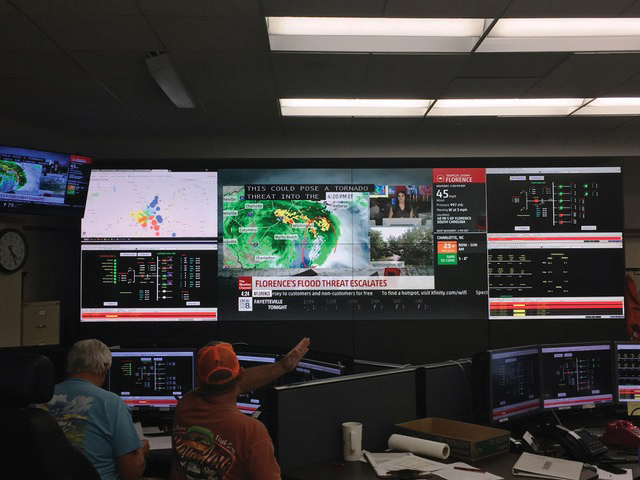
Remote management proves essential to disaster preparedness efforts for Fayetteville PWC in North Carolina.
The road ahead
The acceleration of digital transformation amidst the COVID-19 pandemic has had a major impact across industries, with many left wondering what changes are only temporary and what will be here to stay when things go “back to normal.” Utilities should consider this question as well. Regardless of any future developments with the pandemic, the utility landscape has been altered and there is likely no going back.
The bright spot in this change and uncertainty is the critical role utilities have played and will continue to play in what comes next. As communities worldwide ran out to thank healthcare workers throughout the pandemic, they simultaneously sang the praises of utility workers who ensure that hospitals have power and millions of Americans can safely work from home without interruption. The perseverance and ingenuity that utilities exhibited in providing service through the pandemic underscore their ability to take on whatever is next with their communities and customers in mind.
 Mike McGann is vice president of Sensus Americas, Global Engineering and Assessment Services at Xylem. He leads teams solving tomorrow’s biggest challenges for water, gas and electric utilities, today.
Mike McGann is vice president of Sensus Americas, Global Engineering and Assessment Services at Xylem. He leads teams solving tomorrow’s biggest challenges for water, gas and electric utilities, today.
A Lean Six Sigma Master Black Belt and United States Marine Corps Veteran, McGann is skilled in applying continuous improvement methodology and process control to help individuals and teams do their best work and serve their customers and communities.
1 “The Retail Pivot: How Retailers Have Adapted Through Digital Transformation,” June 5, 2020.
2 eMarketer, “US Ecommerce 2020,” June 8, 2020
3 U.S. Census Bureau; July 1, 2019
4 ZDNet, “New customer expectations are rewriting the digital transformation playbook,” June 12, 2019






